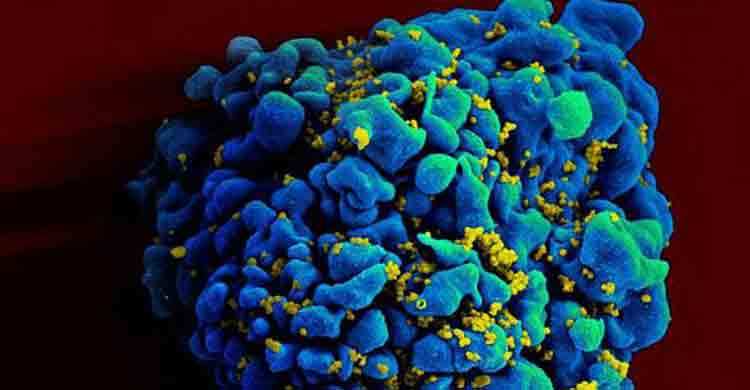Directed evolution to solve a drug resistant disease

The ideal treatment then for us, “hosts” is to have an enzyme that can recognize this foreign DNA and chop it off.
A few days ago, media reports highlighted how a German team has been able to cut or slice off an important portion of the genetic material of the human immunodeficiency virus (HIV), which infects and causes the deadly disease Acquired Immunodeficiency Syndrome or AIDS.
This breakthrough has come after a decade of attempts by this team of researchers from Dresden and Hamburg, and therein lays an engaging story of how they mimicked nature artificially to make this path-breaking advance.
Bacteria and fungi enter a cell as immigrants. Some of them are helpful, some stay quiet while some others cause trouble to the “host” (dark humor by scientists), or are pathogenic.
Antibiotics tend to destroy the immigrant microbe. Viruses, on the other hand, go a step further. Upon immigration, they insert their genetic material or DNA into that of the host organism.
They are thus akin to citizens and stay integrated formally within the host for generations on.
HIV is even craftier. Its genetic material is not the usual DNA, but its cousin, RNA.Yet, it integrates into the host genome, doing so in first making a copy or transcript of its RNA into DNA (this is actually reverse transcription).
This DNA version is called the provirus, which integrates itself into the host genomic DNA, causing great damage to the host.
The ideal treatment then for us, “hosts” is to have an enzyme that can recognize this foreign DNA and chop it off. Indeed we have such enzymes, called recombinases.
That the host has such a recombinase, with the nickname Tre, was discovered a decade ago by Dr Indrani Sarkar, while working in the German group. But this was not sufficient, since the HIV provirus readily mutates and changes its DNA sequence in parts.
What the body has is not just one set of unmutated HIV provirus, but a mixture of this and some mutated versions or subtypes as well. Tre can cut off some but not all subtypes, which can still stay and inflict damage and disease.
There is one drug called cART which even today is the main drug against AIDS, but it is very expensive ($20,000 per person per year).
In a noble and Gandhian effort to make this drug affordable to all, Dr. Yusuf Hamied of CIPLA India boldly declared and offered this drug to many nations in Africa at rock-bottom prices, in defiance of major drug cartels, this has proved eminently successful and has been appreciated.
However, complications such as side reactions, drug-resistant strains of the virus and such other factors still cry out for additional drugs and methods to fight and win the war against HIV and AIDS.
It is here that the German group has scored success. They used the method now known as Directed Evolution. Notice the play on words here. Evolution is known to be random and chancy, not oriented towards any goal.
The key molecular event in evolution is change or mutation in the sequence of the genetic material (DNA or RNA). But now we have the methods to read these sequences (thanks to the double Nobelist Sanger), and also the ability to synthesize these chains (thanks to the Nobelist Khorana).
Hence, making and changing the DNA/RNA sequence at will, or to do site-specific mutagenesis (thanks to the Nobelist Michael Smith) has become a reality.
What the researchers did was to first analyze the DNA sequences of many variants of the HIV protovirus using a database library, and found that one particular region in the sequence, known as loxBTR, was conserved in over 90 per cent of all variants.
This loxBTR is thus the Achilles Heel of most, if not all, HIV subtypes reported so far. If we can make an enzyme in the lab that can chop off this region of the HIV protoviral genome, we have a molecule that can act as a drug against even the virus that is still dormant and hiding within the body.
To this end, the group chose the recombinase Tre mentioned above, and kept on changing its sequence and structure step after step, each step built as an improvement over the previous step.
After 145 steps or cycles, they obtained an improved Tre enzyme active against over 90 per cent of the HIV subtypes known, or became broader in range.
This step over step evolution, directed towards a broad range recombinase, which they named Brec1, led to the safe removal of HIV from infected cells in the lab, as well as from HIV-infected mice. Brec1 thus has the potential for clinical application as a cure against most subtypes of HIV and thus the disease AIDS.
Directed evolution, or what Wikipedia defines as a “method used in protein engineering that mimics the process of natural selection to evolve DNA/RNA and thus proteins towards a user-defined goal”.
If it can be used so successfully against HIV, why not use it against other scourges such as tuberculosis? The group of Dr. Matthew DeLisa at Cornell has been arguing for such an approach and we hope some Indian groups will take this up. – THE HINDU


